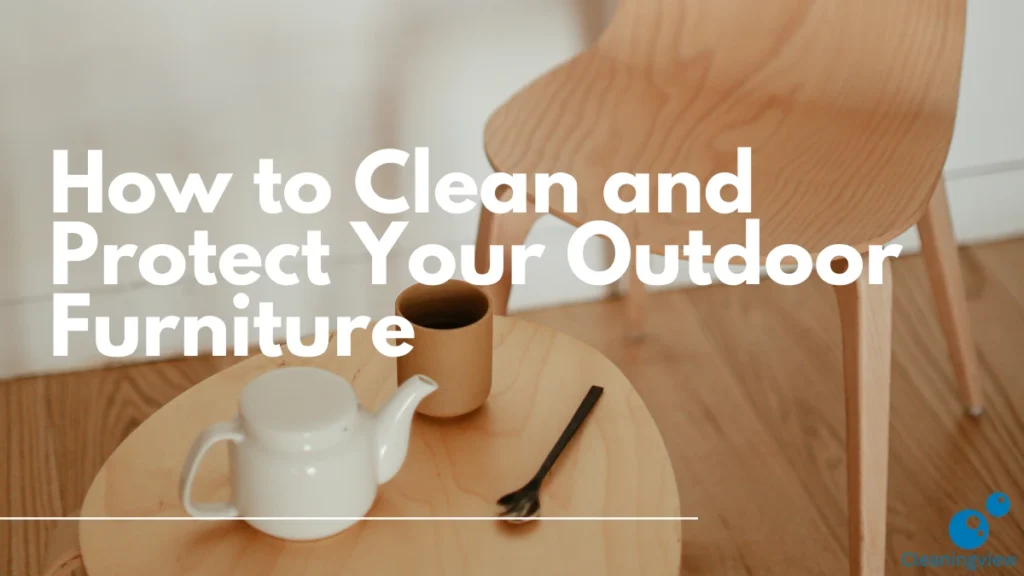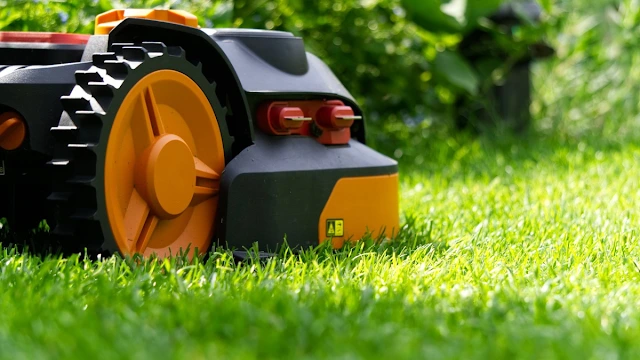
Learn how to clean and protect your outdoor furniture with our detailed guide. Discover tips for wood, metal, plastic, wicker, and fabric furniture. Keep your outdoor space looking its best all year round with simple, effective maintenance strategies.
Introduction
Outdoor furniture adds style and comfort to our outdoor spaces. However, it requires regular maintenance to keep it looking its best. Neglecting your outdoor furniture can lead to wear and tear, reducing its lifespan. This article will guide you through the best practices for cleaning and protecting your outdoor furniture, ensuring it stays in top shape for years to come.
Understanding Different Types of Outdoor Furniture
Wood Furniture
Wooden furniture is elegant and durable but requires special care to prevent damage from weather and pests. Different types of wood, such as teak, cedar, and eucalyptus, have unique maintenance needs. Understanding the type of wood you have is crucial for proper care.
Metal Furniture
Metal furniture is sturdy and can withstand harsh conditions, but it is prone to rust and corrosion. Common metals used in outdoor furniture include aluminum, wrought iron, and stainless steel. Each type has its own maintenance requirements to prevent rust and keep it looking new.
Plastic Furniture
Plastic furniture is lightweight and easy to clean, making it a popular choice for outdoor settings. However, it can become brittle and faded with prolonged sun exposure. Understanding how to clean and protect plastic can keep it looking fresh and extend its life.
Wicker Furniture
Wicker furniture offers a classic look and is often made from natural or synthetic materials. Natural wicker is more susceptible to weather damage, while synthetic wicker is more durable. Proper cleaning and protection methods differ based on the material.
Fabric and Cushions
Fabrics and cushions provide comfort and style but need proper cleaning and protection to avoid mildew and fading. Different fabrics require different care, and it’s essential to know how to treat each type to maintain its appearance and longevity.
Essential Cleaning Supplies
Basic Cleaning Tools
| Items | Description |
| Soft Brushes | Ideal for scrubbing surfaces without scratching. |
| Microfiber Cloths | Great for dusting and wiping down furniture. |
| Buckets | Useful for mixing cleaning solutions and carrying water. |
| Garden Hose | Perfect for rinsing off dirt and soap |
Specialized Cleaning Products
| Items | Description |
| Mild Detergents | Gentle yet effective for most surfaces. |
| Wood Cleaners | Formulated to clean and protect wood. |
| Metal Polish | Helps restore shine and protect metal surfaces. |
| Plastic Restorers | Bring back the original color and finish of plastic. |
| Fabric Protectors | Prevent stains and weather damage on cushions. |
General Cleaning Tips for All Types of Outdoor Furniture
Regular Cleaning Routines
Regularly clean your furniture to prevent dirt and grime buildup. Use a soft brush or cloth to remove loose debris and wash surfaces with mild soap and water. Regular maintenance keeps furniture looking new and prevents long-term damage.
Seasonal Deep Cleaning
Perform a deep clean at the start and end of each season. This involves more thorough cleaning and inspections for damage. Deep cleaning helps to address any issues before they become major problems and prepares your furniture for heavy use or storage.
Cleaning Wooden Outdoor Furniture
Daily Cleaning Methods
Dust wooden surfaces with a soft cloth. For spills, use a damp cloth with mild soap. Regular dusting prevents dirt from embedding in the wood grain, keeping the surface smooth and clean.
Deep Cleaning Techniques
Mix mild detergent with water and scrub the wood gently with a soft brush. Rinse with clean water and let it dry completely. Deep cleaning removes built-up grime and prepares the wood for sealing or oiling.
Protecting and Sealing Wood
Apply a wood sealant or oil to protect against moisture and UV rays. This should be done at least once a year. Sealing wood prevents it from drying out and cracking, while oiling enhances its natural beauty and offers protection.
Cleaning Metal Outdoor Furniture
Rust Removal
Use a wire brush to remove rust spots. Apply a rust converter to prevent further corrosion. Rust can weaken metal furniture, so it’s essential to address it promptly.
Polishing Metal Surfaces
Polish metal surfaces with a metal-specific cleaner to restore shine and protect against tarnish. Polishing also creates a protective barrier against moisture.
Preventing Future Rust
Cover metal furniture when not in use and store it in a dry place during wet seasons. Regularly check for and address any signs of rust to keep your furniture in top condition.
Cleaning Plastic Outdoor Furniture
Removing Stains and Grime
Wipe down plastic furniture with a mixture of mild detergent and water. For tough stains, use a baking soda paste. Regular cleaning prevents stains from becoming permanent and keeps plastic looking fresh.
Restoring Color and Shine
Use a plastic restorer to bring back the original color and shine of your furniture. These products often contain UV inhibitors to protect against sun damage.
Cleaning Wicker Outdoor Furniture
Dusting and Vacuuming
Dust wicker furniture regularly with a soft brush. Use a vacuum with a brush attachment for deeper cleaning. Dusting prevents dirt from getting trapped in the weave, which can cause wear over time.
Deep Cleaning Wicker
Mix mild detergent with water and scrub gently with a soft brush. Rinse thoroughly and allow to dry. Deep cleaning removes built-up grime and helps maintain the flexibility of natural wicker.
Cleaning Fabric and Cushions
Spot Cleaning
Use a fabric cleaner or mild detergent to spot clean any stains. Blot the area with a clean cloth to avoid spreading. Spot cleaning helps to keep fabrics looking new and prevents stains from setting.
Machine Washing
Check the care label on cushions and fabric covers. Many can be machine washed on a gentle cycle. Always use a mild detergent and air dry to prevent shrinking.
Protecting Fabric from Weather
Use fabric protectors and keep cushions in a dry, shaded area when not in use. Storing cushions properly extends their life and keeps them looking fresh.
Protecting Outdoor Furniture
Using Covers
Invest in high-quality covers to protect your furniture from the elements. Covers prevent damage from UV rays, rain, and snow, extending the life of your furniture.
Storing Furniture During Off-Seasons
Store your furniture in a shed or garage during winter or rainy seasons to prolong its life. Proper storage prevents damage from extreme weather and keeps your furniture ready for use when needed.
Maintaining Your Outdoor Furniture
Regular Inspections
Check your furniture regularly for signs of wear and tear. Early detection of issues can prevent further damage. Regular inspections help to identify and address small problems before they become significant.
Repairing Minor Damages
Fix minor issues like loose screws, small cracks, or broken slats promptly to avoid bigger problems. Regular maintenance ensures that your furniture remains safe and functional.
DIY Cleaning Solutions
Homemade Cleaning Recipes
Vinegar and Water Solution: Ideal for general cleaning and disinfecting.
Baking Soda Paste: Effective for tough stains and mildew.
Olive Oil and Lemon Juice: Great for polishing and conditioning wood.
Eco-Friendly Options
Opt for biodegradable soaps and natural cleaning agents to minimize environmental impact. Eco-friendly options are safe for both your furniture and the environment.
Common Mistakes to Avoid
Using Harsh Chemicals
Avoid using bleach or other harsh chemicals that can damage surfaces and fabrics. Harsh chemicals can strip finishes and weaken materials.
Ignoring Manufacturer’s Instructions
Always follow the care instructions provided by the manufacturer to avoid voiding warranties and causing damage. Manufacturer’s guidelines are designed to help you maintain your furniture properly.
Conclusion
Taking good care of your outdoor furniture will keep it looking great and extend its lifespan. Regular cleaning and protection are key. Follow these guidelines, and your outdoor furniture will remain a beautiful and functional part of your outdoor space.
FAQs: Clean and Protect Your Outdoor Furniture
How often should I clean my outdoor furniture?
It’s best to clean your outdoor furniture at least once a month and perform a deep clean at the start and end of each season. Regular maintenance prevents dirt buildup and extends the life of your furniture.
Can I use bleach on my outdoor furniture?
It’s generally not recommended as bleach can damage many materials. Use mild detergents or specialized cleaners instead. Bleach can strip finishes and weaken fabrics, leading to premature wear.
How do I remove mold from outdoor cushions?
Use a solution of water and white vinegar, and scrub the affected areas gently. Rinse and let them dry completely in the sun. Mold can cause health issues and damage fabrics, so it’s essential to address it promptly.
What’s the best way to protect outdoor furniture in winter?
Store your furniture indoors if possible. If not, use high-quality covers to protect them from the elements. Proper storage prevents damage from cold and moisture, extending the life of your furniture.
Can I leave my outdoor furniture uncovered?
It’s better to use covers to protect your furniture from dirt, rain, and UV damage, extending its lifespan. Covers provide a protective barrier that helps maintain the appearance and durability of your furniture.
Read More
https://cleaningview.ca/best-ways-to-clean-and-maintain-your-living-room-furniture/
Important: The information provided here in the post is for general informational purposes only. It should not be taken as professional or any other type of advice. Always seek the advice of a qualified professional before implementing this information on your own. Thank you!
Add CleaningView To Your Google News Feed


